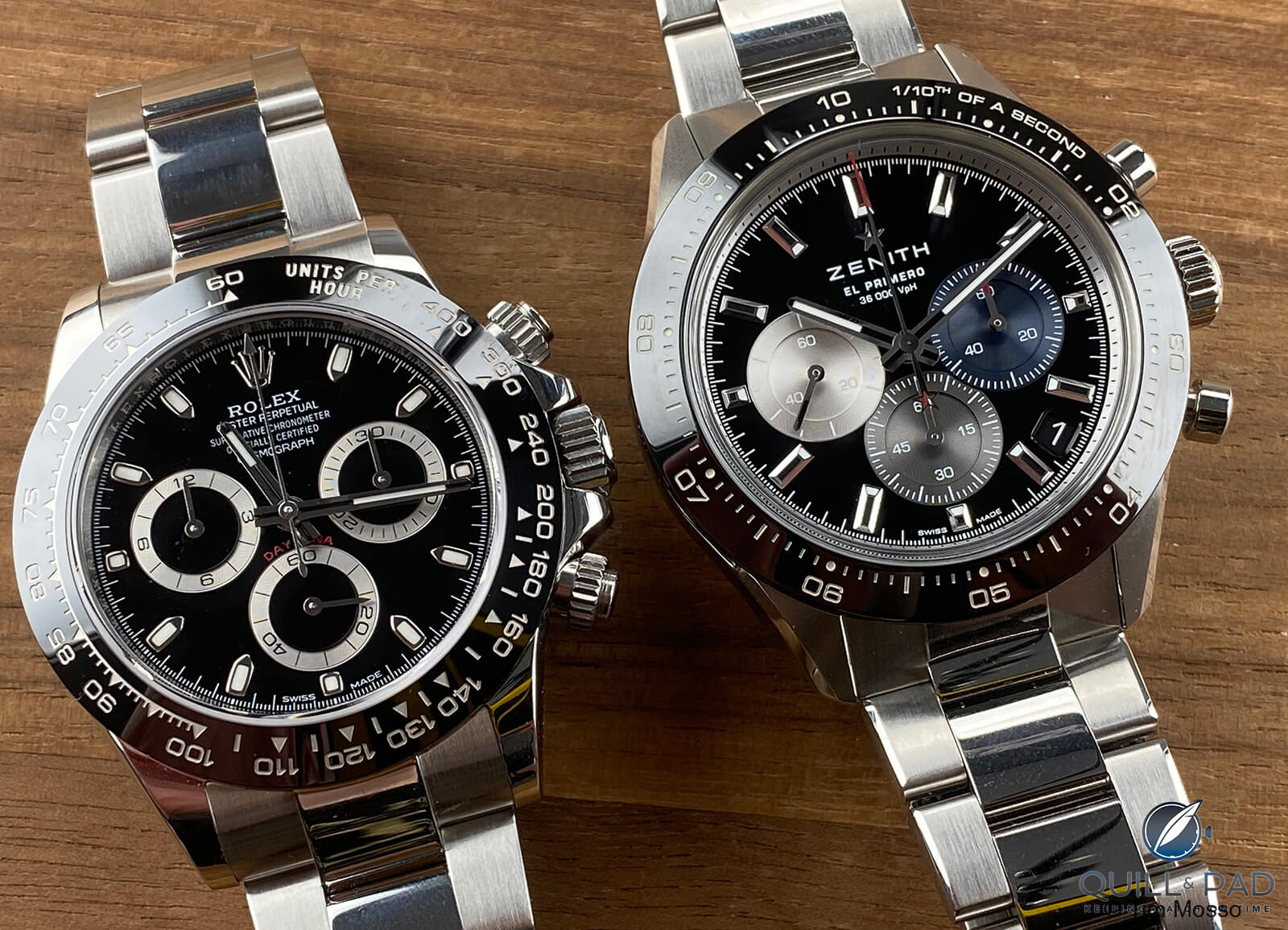The Rolex Daytona is a legendary timepiece that has captured the hearts of watch enthusiasts around the world. Known for its iconic design, impeccable craftsmanship, and unrivaled performance, the Rolex Daytona is considered one of the most prestigious chronograph watches in the world. However, what many may not know is that the Rolex Daytona has a fascinating history and a special connection with the Zenith movement, which adds to its allure. In this blog, we will delve into the story of the Rolex Daytona and its correlation with the Zenith movement.
The Birth of the Rolex Daytona The Rolex Daytona, also known as the Cosmograph Daytona, was introduced by Rolex in 1963 as a professional racing chronograph. It was designed specifically for race car drivers, with a tachymeter bezel that allows them to measure average speeds over a given distance. The watch was named after the famous Daytona International Speedway in Florida, USA, which is synonymous with motorsports and the pinnacle of high-speed racing.
At its inception, the Rolex Daytona was powered by the Valjoux manual-winding movement, which was a common choice for chronograph movements at the time. However, Rolex's pursuit of perfection and the desire to create an in-house movement led to an exciting collaboration with another renowned Swiss watchmaker, Zenith.
The Zenith El Primero Movement: A Perfect Match for Rolex In the late 1980s, Rolex sought to develop its own automatic chronograph movement to replace the Valjoux movement used in the Daytona. After an extensive search, Rolex turned to Zenith, a Swiss watch manufacture known for its innovative and high-quality movements, particularly the El Primero movement.
The Zenith El Primero movement was introduced in 1969, and it was the first integrated automatic chronograph movement in the world, featuring a high-frequency escapement of 36,000 vibrations per hour (VPH), which allows for highly accurate timekeeping. The El Primero movement also boasted a column wheel design, known for its smooth and precise operation.
Rolex modified the Zenith El Primero movement to meet its stringent standards of performance and reliability. The modifications included a reduced frequency of 28,800 VPH, which Rolex believed was the optimal frequency for its watches, as well as a custom hairspring and balance wheel. The modified El Primero movement was then rebranded as the Rolex Caliber 4030 and became the heart of the Rolex Daytona in 1988.
The Rolex Caliber 4130: The In-House Movement In 2000, Rolex introduced its first fully in-house chronograph movement, the Caliber 4130, as a replacement for the modified Zenith movement in the Daytona. The Caliber 4130 was a landmark achievement for Rolex, as it showcased the brand's commitment to pushing the boundaries of watchmaking and achieving unrivaled performance.
The Rolex Caliber 4130 is a self-winding mechanical movement that features a vertical clutch and a column wheel design, known for its smooth and precise operation of the chronograph functions. It also has a Parachrom hairspring for enhanced accuracy and resistance to magnetic fields and temperature changes. The Caliber 4130 has a power reserve of approximately 72 hours, ensuring that the Daytona can keep ticking even if not worn for a few days.
The Legacy Continues: The Rolex Daytona with In-House Movement Today, the Rolex Daytona continues to be powered by the Caliber 4130, Rolex's proprietary in-house movement. The Caliber 4130 has set a new standard for chronograph movements, offering exceptional accuracy, reliability, and durability, making the Rolex Daytona one of the most revered timepieces in the world of motorsports and luxury watches.
The correlation between the Rolex Daytona and the Zenith movement is not only a story of technological innovation but also a testament to Rolex's commitment to excellence. Rolex's decision to collaborate with Zenith and later develop its own in-house movement for the Daytona demonstrates the brand's unwavering pursuit of precision, reliability, and performance in every aspect of its timepieces.
The Rolex Daytona with the Caliber 4130 has become an icon in the world of luxury watches, known for its iconic design with a tachymeter bezel, three sub-dials, and a robust stainless steel or precious metal case. The watch is a symbol of luxury, status, and exceptional timekeeping, worn by celebrities, athletes, and watch enthusiasts alike.
In conclusion, the Rolex Daytona's correlation with the Zenith movement is a captivating story that adds to the legend of this iconic timepiece. From its humble beginnings with a modified Zenith movement to the development of its own in-house Caliber 4130, Rolex has continually pushed the boundaries of watchmaking to create a chronograph movement that is synonymous with precision and reliability. The Rolex Daytona remains a timeless masterpiece, embodying the perfect fusion of cutting-edge technology, craftsmanship, and design, making it a cherished timepiece for generations to come. Whether you're a motorsports enthusiast or a luxury watch connoisseur, the Rolex Daytona with its Zenith-derived heritage is undoubtedly a watch worth admiring and owning. So, if you're looking for a timepiece that exudes performance, luxury, and history, the Rolex Daytona should undoubtedly be at the top of your list. It's a watch that has earned its place in horological history and continues to be a cherished piece for watch collectors and enthusiasts around the world. As Rolex continues to innovate and elevate the performance of its timepieces, we can only anticipate the future legacy that the Daytona will leave in the world of luxury watches. So, why wait? Start your own journey with the Rolex Daytona today and experience the legendary performance of this exceptional timepiece. Happy racing!


